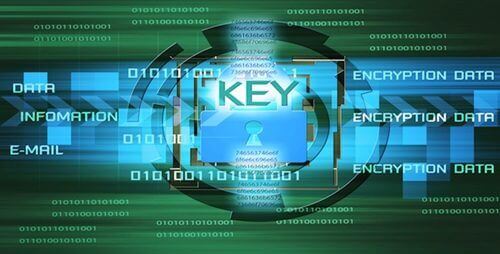
Wadih Pazos
Wadih founded both PairSoft and PaperSave. He is an avid technologist who specializes in streamlining operations and maximizing productivity.
View all posts by Wadih PazosWadih Pazos

That being said, these solutions aren’t cure-alls. After all, what if the threat of theft comes from within the walls of the office? Employees who want to steal important files will likely know how to get around the cameras, have access to keys that unlock the cabinets, and other methods of taking the papers. Even if workers have the best of intentions, a misplaced document could spell a lot of trouble.
It’s different when companies embrace electronic workflow and move toward paperless systems. Gone are the tangible documents, replaced by digital files. These can be much easier to protect from prying eyes – if someone wants to steal crucial information, they have to first gain access to the system, then have the right authorization to tap into sensitive files.
However, that’s not to say that business leaders can adopt a “set it and forget it” mentality – they too have to work to keep all records safe. So what do managers need to know in order to keep company documents protected when they’re online?
The easiest way to ensure that documents will continue to stay safe is to make sure all workers are on the same page. If even one worker doesn’t follow best practices, the whole company might be vulnerable to a cyberattack that could expose important information, such as bank account or employee Social Security numbers.
As Business 2 Community reported, education should be on the top of the list for employees at the National Health Service, as the group moves to a paperless system. The news source stated that organizations that digitize need to be proactive in order to protect electronic files, so those on the front end must have the right training.
Upon digitizing, it might be worth it for company leaders to hold a seminar about best practices when it comes to choosing a password, logging off at the end of the day and accessing files only from reliable and protected devices, among other factors.
Bloomberg BNA suggests that it might behoove company leaders to place the most sensitive documents in their area and make sure the smallest possible number of people have permission to tap into this folder. For instance, forms that contain employee Social Security numbers might only need to be looked at by human resources employees. So, administrators might want to make sure that only staffers in this section have access to sensitive information. Even then, maybe only higher-ups should have the correct permissions to open such files.
Deciding who needs authorization for individual critical records might mean more work for administrators, but it will pay off and give leaders peace of mind in the long run.
“Who needs access to what? Not everyone in HR needs access to the medical information of an employee,” for example, SHRM Manager Lisa Orndoff told the news source.
Even if a business has yet to embrace electronic document management tools, there are a number of things that should already be present on their networks. These elements – like firewalls, multi-pronged login requirements, encryption, and other features – need to be re-evaluated to ensure they work when a company’s files make their way to computers.
Automated workflows empower your team to focus on larger, more complex initiatives without having to think about small processes.


Many organizations start with manual receipt handling, fragmented card feeds and slow AP processes. Implement AI agents to auto-capture receipts, route approvals, enable punch-out buys and post to the ERP.
Result: faster batching, fewer errors and cost savings. “This saves us hours every month.”
Many organizations face slow, paper-heavy AP and fragmented procurement that waste time and inflate costs. AI Agents can automate approvals, PO matching and record sync to improve speed, accuracy and control. Client quote: “It freed up hours and made our process reliable.”
Operational drag and rising costs slow growth: teams waste time on manual tasks, misaligned priorities and opaque processes. AI Agents help automate routine work and coordinate actions across teams. “We’ve lost time to repeats and handoffs,” says a typical client.
Companies struggle with manual procurement, fragmented approvals, and costly integrations that slow growth and obscure spend. Our AI Agents streamline requisitions, POs, and invoice matching to cut manual work and improve visibility. “We were wasting time and missing insights,” says a client.

Many teams start with fragmented PO/AP systems, manual matching and delayed financial reporting. Deploying AI agents to automate PO checks, real-time encumbrance tracking and invoice matching reduces processing time and errors, delivering live budgets and faster closes. “Finally, we can see current balances and approve instantly.”
Many companies juggle growing invoice volumes and legacy systems. They struggle with manual processes, compliance gaps and limited headcount. Our AI Agents automate integrations, enforce rules and surface exceptions. The typical outcome: faster closes and measurable ROI. “We stopped chasing invoices.”